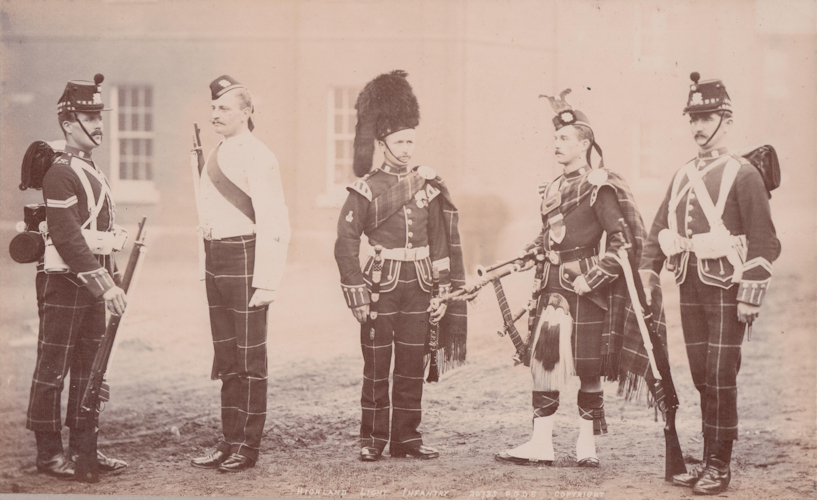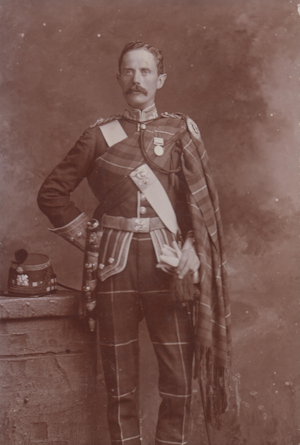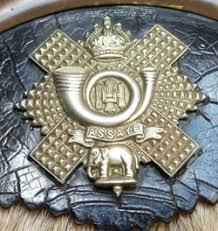Highland Light
Infantry
-
The regiment was formed as part of the Childers Reforms on 1 July 1881 by the amalgamation of the 71st (Highland) Light Infantry (as the 1st Battalion) and the 74th (Highland) Regiment of Foot (as the 2nd Battalion) as the city regiment of Glasgow, absorbing local Militia and Rifle Volunteer units. Its exact status was ambiguous: although the regiment insisted on being classified as a non-kilted Highland regiment it recruited mainly from Glasgow in Lowland Scotland.
- 71st (Highland) Light Infantry
The regiment embarked for Canada in May 1824 and then moved on to Bermuda in October 1831 before returning to England in September 1834. It returned to Canada in April 1838 and then moved to Antigua in December 1844 before returning home in January 1847.
The regiment embarked for Corfu in 1853 and then landed in the Crimea for service in the Crimean War: it saw action at the Siege of Sevastopol in winter 1854.
The regiment went on to India to help suppress the Indian Rebellion in 1857 and remained there for the Ambela Campaign in 1863. The regiment returned home in 1865 and then embarked for Gibraltar in 1868 before returning home again in 1880.
- 74th (Highland) Regiment of Foot
The regiment embarked from Ireland for Halifax, Nova Scotia in May 1818: on arrival units were detached for service in St. John's, Newfoundland and Labrador and Saint John, New Brunswick. The regiment moved on to Bermuda in August 1828 and then returned home in December 1829. The regiment embarked for Barbados in September 1834 and, after arrival there, moved on to Grenada in December 1834. The regiment transferred to Antigua in November 1835: it was then split into two formations which were deployed to Dominica and to Saint Lucia in February 1837.
The regiment moved on to Quebec in Canada in May 1841 before embarking for home and landing at Deal in March 1845.
The regiment then sailed to the Cape Colony in 1851 to take part in the Eighth Xhosa War. In 1852 a detachment from the regiment departed Simon's Town aboard the troopship HMS Birkenhead bound for Port Elizabeth. At two o'clock in the morning on 28 February 1852, the ship struck rocks at Danger Point, just off Gansbaai. The troops assembled on deck, and allowed the women and children to board the lifeboats first, but then stood firm as the ship sank when told by officers that jumping overboard and swimming to the lifeboats would mostly likely upset those boats and endanger the civilian passengers. 357 men drowned. The regiment's commanding officer, Lieutenant Colonel Alexander Seton, together with one of his ensigns and forty-eight of his other ranks, were among those that perished.
The regiment embarked for India in 1854 and helped to suppress the Indian Rebellion in 1857 before returning home in 1864. It was deployed to Gibraltar in 1868, to Malta in 1872 and to the Straits Settlements in 1876. It went on to Hong Kong in 1878 before returning to the Straits Settlements in 1879 and returning home in 1880.
The 1st battalion was posted to South Africa in October 1899, after the outbreak of the Second Boer War. They were stationed in Egypt in 1902.
The 2nd Battalion saw action at the Battle of Tell El Kebir in September 1882 during the Anglo-Egyptian War: Lieutenant William Edwards was awarded the Victoria Cross for his actions during the battle. The battalion was stationed in England from 1883, but moved to India the following year. In February 1900 the battalion departed from Colombo to return home, and in October 1902 they were posted to Jersey.
Following heavy British losses in the early part of the Second Boer War in 1899, many of the militia battalions were embodied for active service, including the 3rd battalion Highland Light (formerly the 1st Royal Lanark Militia), under the command of Lieutenant-Colonel William Story. The battalion served throughout the war, and 890 officers and men were reported to return home on the SS Doune Castle in September 1902, after the war had ended earlier that year.


Major
Photo Lafayette
 |
|
Photo Long (Newport | |
 |
Photo Hodge (Stonehouse)
Egypt Medal and Khedive star | |
Retour



